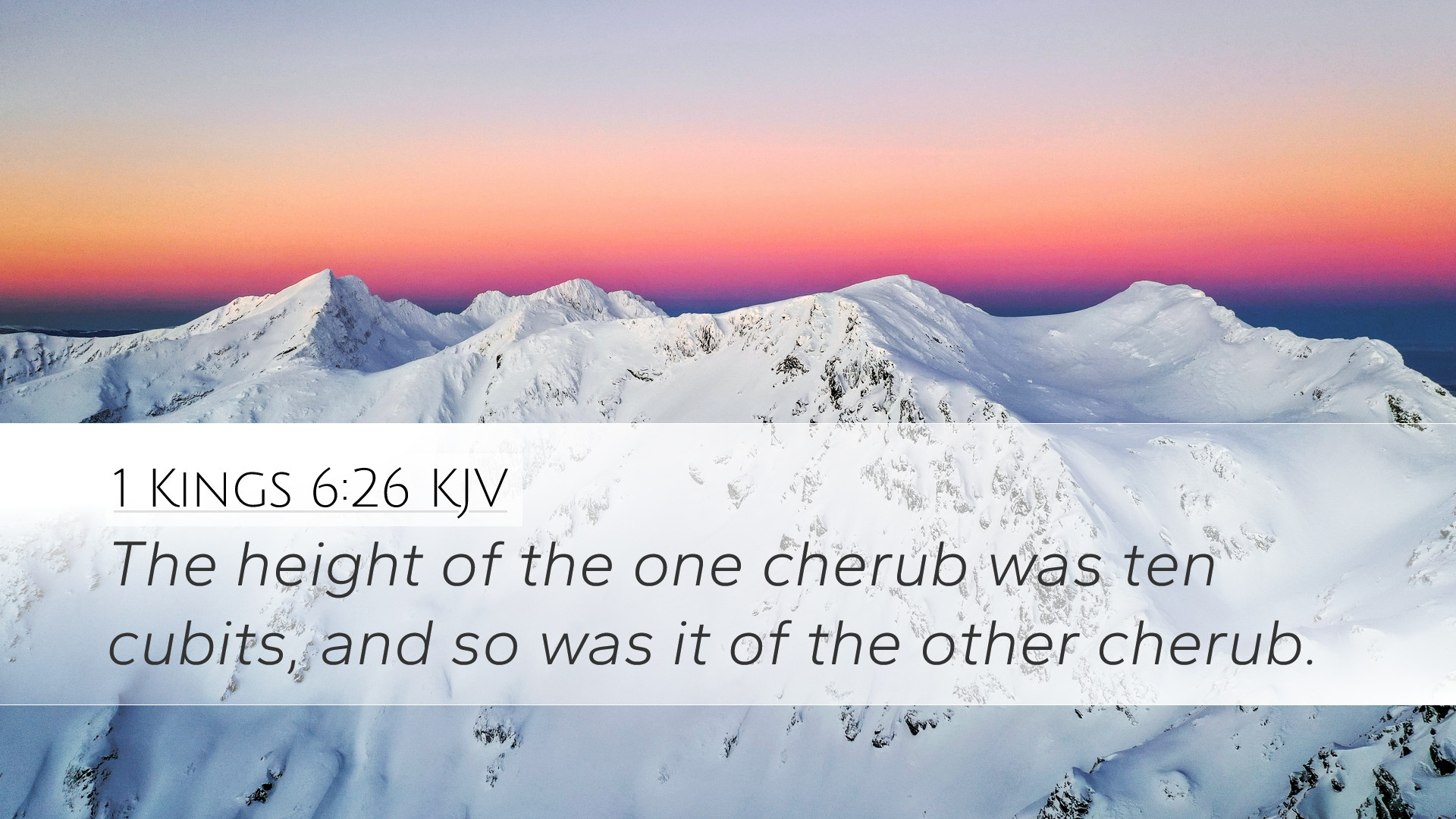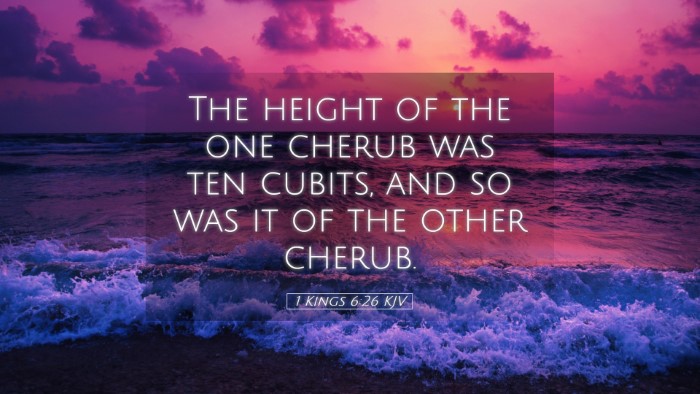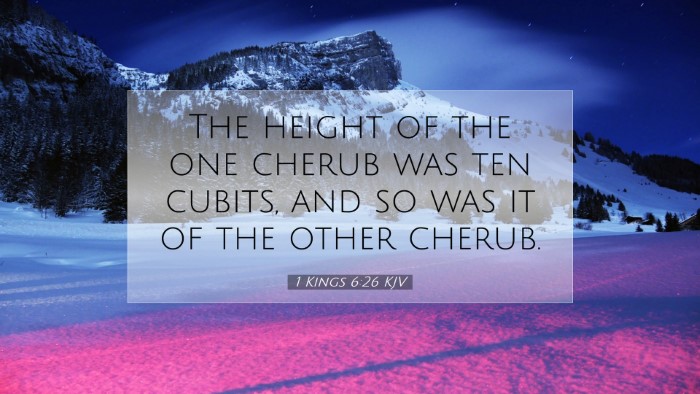1 Kings 6:26 - "The height of the one cherub was ten cubits, and so was it of the other cherub."
This verse is extracted from the narrative describing the construction and dedication of Solomon's Temple—a pivotal event in the history of Israel. The reference to the cherubim, which adorned the Holy of Holies, carries deep theological and symbolic significance.
Overview of the Cherubim in Solomon's Temple
The cherubim, as described in 1 Kings 6, were massive, impressive figures situated above the Ark of the Covenant. Their purpose was not only ornamental but also indicative of God's presence among His people. According to Matthew Henry, the cherubim signified the majesty and glory of the divine, and their towering forms exemplified the reverence owed to God.
The Symbolism of the Cherubim
-
Divine Guardianship: The cherubim are often viewed as guardians of sacred spaces. Albert Barnes emphasizes that in the ancient Near Eastern context, cherubs are depicted as protectors of the divine realm, underscoring their role in safeguarding the holiness of God's presence.
-
Representation of God’s Presence: The positioning of the cherubim above the mercy seat illustrated the idea that God dwells among His people. Adam Clarke notes that such figures were not merely physical but served to remind Israel of God's continuous connection to His covenant.
-
Mystical Reality: The height and form of the cherubim can portray a sense of the divine mystery that surrounds God's nature. Matthew Henry reflects on how their supernatural stature calls attention to God's transcendence while simultaneously indicating His immanence in the worshipping community.
The Dimensions and their Significance
The specific reference to the height of the cherubim, at ten cubits (approximately 15 feet), conveys a message of grandeur and authority. Albert Barnes points out that such dimensions are expressive of God’s majesty. They tower over the worship spaces, symbolizing that God, while approachable, is also sovereign and majestic.
Implications for Worship and Theology
The presence of the cherubim in the Temple speaks to essential theological themes. They are integrally linked to worship and how the Hebrews understood God’s presence among them:
-
A Call to Reverence: The imposing figures of the cherubim call for a posture of worship that is reverent and awe-filled. Adam Clarke emphasizes that engaging with the divine requires a heart attuned to God's holiness.
-
The Assurance of God’s Presence: For the Israelites, the cherubim served as a tangible reminder of God's assurance that He was with them. Matthew Henry highlights that this assured presence is an anchor for their faith amidst trials.
-
Intermediaries in Worship: The cherubim act as intermediaries between God and His people, reflecting their role in Jewish liturgical practice. Albert Barnes suggests that this portrayal points to a further understanding of Christ as the ultimate intermediary in the New Covenant.
Conclusion
The cherubim described in 1 Kings 6:26 invite believers into a deeper understanding of God’s holiness, majesty, and the relational dynamics of worship. The reflections from Matthew Henry, Albert Barnes, and Adam Clarke reveal the rich layers of meaning that this verse contains for those seeking to lead others in faith or study Scripture in its profound depth.


